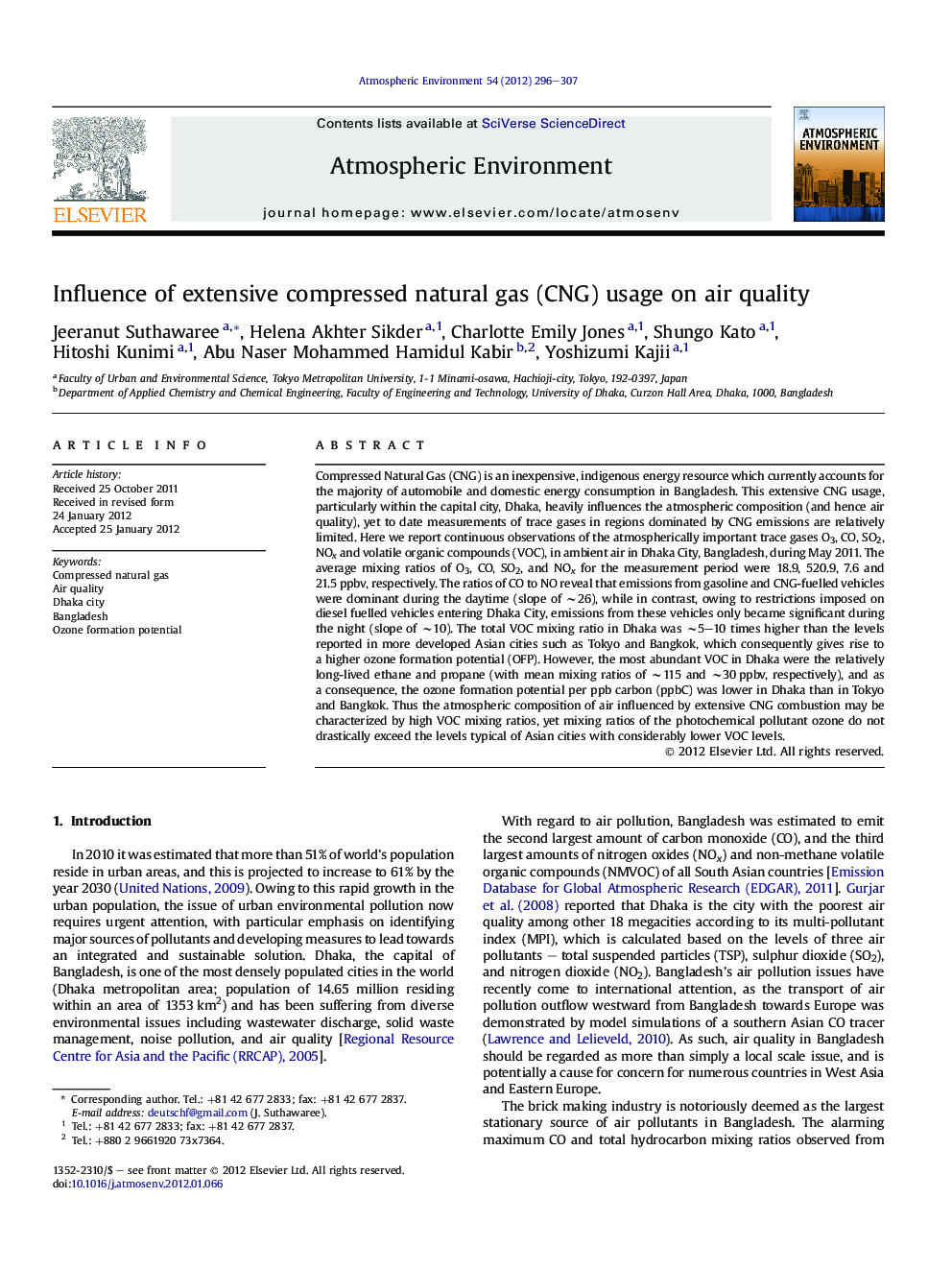| Article ID | Journal | Published Year | Pages | File Type |
|---|---|---|---|---|
| 4438799 | Atmospheric Environment | 2012 | 12 Pages |
Compressed Natural Gas (CNG) is an inexpensive, indigenous energy resource which currently accounts for the majority of automobile and domestic energy consumption in Bangladesh. This extensive CNG usage, particularly within the capital city, Dhaka, heavily influences the atmospheric composition (and hence air quality), yet to date measurements of trace gases in regions dominated by CNG emissions are relatively limited. Here we report continuous observations of the atmospherically important trace gases O3, CO, SO2, NOx and volatile organic compounds (VOC), in ambient air in Dhaka City, Bangladesh, during May 2011. The average mixing ratios of O3, CO, SO2, and NOx for the measurement period were 18.9, 520.9, 7.6 and 21.5 ppbv, respectively. The ratios of CO to NO reveal that emissions from gasoline and CNG-fuelled vehicles were dominant during the daytime (slope of ∼26), while in contrast, owing to restrictions imposed on diesel fuelled vehicles entering Dhaka City, emissions from these vehicles only became significant during the night (slope of ∼10). The total VOC mixing ratio in Dhaka was ∼5–10 times higher than the levels reported in more developed Asian cities such as Tokyo and Bangkok, which consequently gives rise to a higher ozone formation potential (OFP). However, the most abundant VOC in Dhaka were the relatively long-lived ethane and propane (with mean mixing ratios of ∼115 and ∼30 ppbv, respectively), and as a consequence, the ozone formation potential per ppb carbon (ppbC) was lower in Dhaka than in Tokyo and Bangkok. Thus the atmospheric composition of air influenced by extensive CNG combustion may be characterized by high VOC mixing ratios, yet mixing ratios of the photochemical pollutant ozone do not drastically exceed the levels typical of Asian cities with considerably lower VOC levels.
► Compressed Natural Gas (CNG) has become a common energy source for Bangladesh. ► Ambient levels of O3, CO, SO2, NOx, and VOC in Dhaka are reported during May 2011. ► Comparison of pollutant levels of pre- and post-CNG suggested an improvement of air quality. ► Influence of emission of different types of vehicle during daytime and nighttime. ► Relatively lower OFP/ppbC in Dhaka than that of Tokyo.
